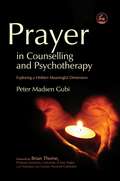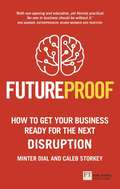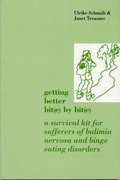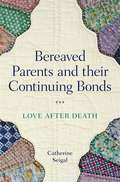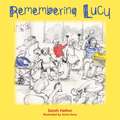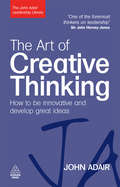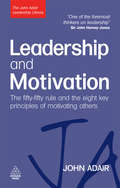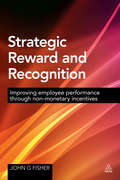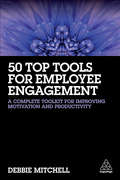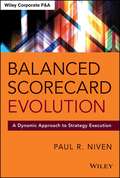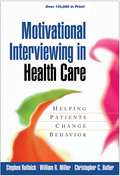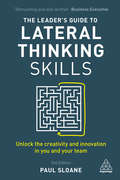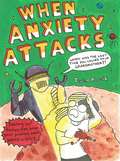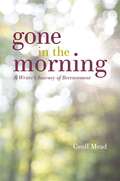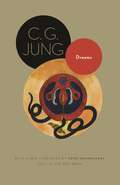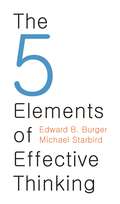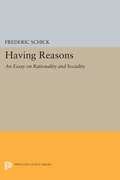- Table View
- List View
Prayer in Counselling and Psychotherapy: Exploring a Hidden Meaningful Dimension (PDF)
by Brian Thorne Peter Madsen Gubi'Peter Gubi's book, the fruit of both his own extensive research and a detailed study of the available literature, explores in depth the way prayer is, and could be, used in counselling and psychotherapy. This book would provide excellent material for a group of counsellors to share and reflect on. Gubi's book is a fine guide to anyone ready to seriously explore these issues.' - Thresholds '... [A] challenge to all therapists to examine their own presuppositions and prejudices and to discover, in so doing, an enhanced flexibility without losing their integrity. It is not recommended reading for those settled in their ways or unwilling to acknowledge their own spiritual yearnings or their lack of courage in the face of another's spirituality. Prayer can be a tough discipline and Peter Gubi demonstrates that its incorporation into the work of the therapist requires no little courage and a willingness to explore afresh what constitutes ethical behaviour as opposed to following the rule book.' - from the foreword by Brian Thorne, Professor Emeritus, University of East Anglia, and Honorary Lay Canon, Norwich Cathedral Within mainstream counselling and psychotherapy there is growing interest in the spiritual dimension of counselling. Prayer is at the centre of most spirituality and prayer is important to many people's psychological well-being. Peter Madsen Gubi argues that philosophically, all counselling can be regarded as prayer, particularly when working at relational depth; that prayer plays an important part in maintaining many mainstream counsellors' well-being and, with caution and considered ethical awareness, prayer can be integrated ethically into counselling when working with people of faith. The use of prayer in counselling is not the antithesis of counselling as some have argued, but can be identified with many accepted therapeutic practices. Grounded in his doctoral research among mainstream counsellors whose work includes prayer, this book encourages counselling and psychotherapy practitioners, and those with an interest in the welfare of others, to consider carefully the ethical place of prayer in counselling.
The Mouse's House: Children's Reflexology for Bedtime or Anytime (PDF)
by Melissa Muldoon Susan QuayleMouse finds a new house and calls upon her woodland friends to help her to make it a cosy home, but will it be ready in time for winter? Combining reflexology with delightfully engaging rhymes and illustrations, this book features easy-to-follow diagrams and instructions for giving basic reflexology to a child during a bedtime (or anytime) story. This unique book, written by a specialist maternity reflexologist, uses this non-invasive complementary therapy to help strengthen the bonding process between parent (or carer) and child and offers a gentle remedy for problems such as sleep difficulties, anxiety and mild pain. No prior reflexology knowledge is required.
Futureproof: How To Get Your Business Ready For The Next Disruption
by Minter DialUSE DISRUPTION TO YOUR ADVANTAGE -MAKE IT AN OPPORTUNITY FOR YOUR BUSINESS. Futureproof paints a complete picture of the major disruptive forces currently facing us -defining them, mapping them out and putting them into context. First understand the Mindsets you need to be fully ready for disruption - what qualities do you need to have, how can you develop them and what should you do next? Next, discover the 12 Forces that are shaping our world: including the new technologies, how they are used and related, the potential Impact of the disruption and how you can to turn them into enablers for your business. For each of the Forces, you'll discover: * What is it and why is it disruptive? * What do you need to know now? * What do you need to do next? BE READY, BE FUTUREPROOF "The opposite of Future Shock is future proof. Either sit still or move! It's the latter that Dial and Storkey have outlined for you here. Adapt or die!" Brian Solis, best-selling author, award-winning digital analyst, futurist and human "This is a book that challenged me and made me think at every turn. It disrupted my mind!" Mark Schaefer, consultant, speaker and author of KNOWN
Getting Better Bit(e) By Bit(e): A Survival Kit For Sufferers Of Bulimia Nervosa And Binge Eating Disorders
by Ulrike Schmidt Janet Treasure June AlexanderEasy to read and illustrated with many real-life examples, this book addresses the specific problems faced on a daily basis by bulimia sufferers. The only self-help programme that has been evaluated in a randomised controlled trial, it provides detailed step-by-step advice for dealing with this condition. Unlike other less problem-oriented books currently available on the subject, this book concentrates on the key behaviour changes necessary for the sufferer to achieve a happier and more fulfilled life. Theory is closely interwoven with practice and the book draws together real problems and solutions experienced by hundreds of sufferers.
Bereaved Parents and their Continuing Bonds: Love after Death
by Catherine SeigalFor bereaved parents the development of a continuing bond with the child who has died is a key element in their grieving and in how they manage the future. Using her experience of working in a children's hospital as a counsellor with bereaved parents, Catherine Seigal looks at how continuing bonds are formed, what facilitates and sustains them and what can undermine them. She reflects on what she learned about the counsellor's role supporting parents in extremely distressing situations. Using the words and experiences of bereaved parents, and drawing on current theories of continuing bonds, the book is relevant to both professionals and parents. It covers important subjects such as the benefits of a therapeutic group for bereaved parents, the challenges for parents when another child is born, the important role of siblings in keeping the bonds alive and how it is for parents whose child dies before birth or in early infancy. The book uses theory lightly but relevantly and places it into the heart of the lived experience. It offers anyone working with bereaved parents insight into the many and varied ways grief is experienced and expressed and what can be helpful and unhelpful. And it offers bereaved parents the opportunity to share other parents' experiences, to understand a little more about their own feelings and to know they are not alone, providing an original and valuable guide to continuing love after death.
Bereaved Parents and their Continuing Bonds: Love after Death (PDF)
by Catherine SeigalFor bereaved parents the development of a continuing bond with the child who has died is a key element in their grieving and in how they manage the future. Using her experience of working in a children's hospital as a counsellor with bereaved parents, Catherine Seigal looks at how continuing bonds are formed, what facilitates and sustains them and what can undermine them. She reflects on what she learned about the counsellor's role supporting parents in extremely distressing situations. Using the words and experiences of bereaved parents, and drawing on current theories of continuing bonds, the book is relevant to both professionals and parents. It covers important subjects such as the benefits of a therapeutic group for bereaved parents, the challenges for parents when another child is born, the important role of siblings in keeping the bonds alive and how it is for parents whose child dies before birth or in early infancy. The book uses theory lightly but relevantly and places it into the heart of the lived experience. It offers anyone working with bereaved parents insight into the many and varied ways grief is experienced and expressed and what can be helpful and unhelpful. And it offers bereaved parents the opportunity to share other parents' experiences, to understand a little more about their own feelings and to know they are not alone, providing an original and valuable guide to continuing love after death.
Remembering Lucy: A Story about Loss and Grief in a School (PDF)
by Anna Novy Sarah HeltonJoe and his friends miss Lucy very much. When she died and they learned they wouldn't see Lucy again they were all very sad. But Joe has a plan: he can remember the happy times he shared with Lucy! He thinks about all the wonderful things Lucy did. How messy she was when she was painting, and the time she giggled through the school play when her crown kept slipping off. Now Joe knows that remembering Lucy means he doesn't have to feel so sad! Children with SEND (special educational needs and disabilities) often experience grief at a much younger age than other children. This touching short story will help children with SEND aged 3+ understand feelings caused by death and loss, and the beautiful hand drawn illustrations help convey the complex experience of bereavement in a simple and clear way. Included is a teacher's guide to talking about bereavement, grief and loss, making this the ideal aid for teachers and support staff at SEND schools and colleges.
The Art of Creative Thinking
by John AdairThe Art of Creative Thinking provides clear, practical guidelines for developing your powers as a creative thinker. Using examples of entrepreneurs, authors, scientists and artists, John Adair illustrates a key aspect of creativity in each chapter. Stimulating and accessible, this book will help you to understand the creative process, overcome barriers to new ideas, learn to think effectively and develop a creative atttitude. It will help you to become more confident in yourself as a creative person. The Art of Creative Thinking gives you a fresh concept of creative thinking and it will guide you in developing your full potential as a creative thinker. New ideas are the seeds of new products and services, and this book will open the door to them.
Leadership and Motivation
by John AdairJohn Adair has transformed our understanding of how leadership works with his pioneering book Not Bosses But Leaders. Here he explores the nature of motivation, individual needs and how they relate to the key tasks facing leaders and managers - good, positive motivation can create, maintain and improve the performance of any team. In Leadership and Motivation John Adair also puts forward his own theory of motivation - the fifty-fifty rule - and then identifies the eight key principles for motivating others. Motivation increases efficiency and productivity - and makes reaching targets more likely. Leadership and Motivation will stimulate your thoughts and ideas on how to inspire others, and offers you some practical ways to motivate yourself and others to achieve.
Strategic Reward And Recognition: Improving Employee Performance Through Non-monetary Incentives
by John G FisherNon-monetary incentives and recognition programmes are an area of employee motivation that is often overlooked. Yet, as Fisher's book reveals, a strategic focus on non-cash rewards can generate significant return on investment in terms of employee engagement, performance improvement and financial results. In the present economic context, with companies pushing to deliver more for less, it is a particularly pertinent issue. Strategic Reward and Recognition brings together theory and practice to guide HR professionals, consultants and senior leaders in developing the most effective programmes for their organizations. It features examples of good practice from all over the world, from different sectors and from both large and small organizations, providing coverage of digital as well as in-person schemes.
Strategic Reward And Recognition: Improving Employee Performance Through Non-monetary Incentives
by John G. FisherNon-monetary incentives and recognition programmes are an area of employee motivation that is often overlooked. Yet, as Fisher's book reveals, a strategic focus on non-cash rewards can generate significant return on investment in terms of employee engagement, performance improvement and financial results. In the present economic context, with companies pushing to deliver more for less, it is a particularly pertinent issue. Strategic Reward and Recognition brings together theory and practice to guide HR professionals, consultants and senior leaders in developing the most effective programmes for their organizations. It features examples of good practice from all over the world, from different sectors and from both large and small organizations, providing coverage of digital as well as in-person schemes.
50 Top Tools for Employee Engagement: A Complete Toolkit for Improving Motivation and Productivity (1st edition)
by Debbie MitchellEngaged employees are more productive, motivated and resilient, yet gaining financial support to develop engagement is harder than ever as budgets are being squeezed and everyone is being asked to do more with less. 50 Top Tools for Employee Engagement shows that you don't need expensive interventions or additional resource to achieve employee engagement. It contains practical tools which can be used to make an immediate difference to engagement, whether you're working with individuals, teams or the organization as a whole. Each tool in 50 Top Tools for Employee Engagement includes guidance on when to use it, how long it will take and useful hints and tips to help get the most out of it. Most importantly, this book will give guidance on how to measure the impact of each tool to show what's working and where efforts are best focused. Addressing all the key areas of engagement throughout the employee life cycle, from talent attraction and induction to career progression and development, this book is a complete resource to engaging your workforce.
Balanced Scorecard Evolution: A Dynamic Approach To Strategy Execution (PDF)
by Paul NivenThe best plan is useless without effective execution The future of business has become so unpredictable that your five-year plan may be irrelevant next week. To succeed in the modern market, you must constantly assess your progress and adapt on the fly. Agility, flexibility, continual learning, and adaptation are the new rules of business success. A differentiating strategy is crucial, but it will only lead to competitive advantage if you execute it flawlessly. You'll succeed only if you have the right insight for strategic planning and the agility to execute your plan. Balanced Scorecard Evolution: A Dynamic Approach to Strategy Execution provides the latest theory and practice from strategic planning, change management, and strategy execution to ensure your business is flexible, future ready, and primed for exceptional execution. Author Paul R. Niven guides you through the new principles of The Balanced Scorecard and shows you how to apply them to your planning and strategy execution endeavors. Read case studies that illustrate the theory and practice of strategic agility and execution Learn how to create the objectives, measures, targets, and strategic initiatives that can make your plan a reality Use the latest change management techniques to boost strategy execution success Gain the knowledge and tools you need to face your challenges head-on Motivate your employees to change behaviors toward plan accommodation Making a plan isn't enough. You must actually take steps to implement your plan, and this requires excellent leadership skills. Change can be hard, and your organization may be resistant. Balanced Scorecard Evolution: A Dynamic Approach to Strategy Execution provides everything you need to make things happen.
Motivational Interviewing In Health Care: Helping Patients Change Behavior (PDF)
by Stephen Rollnick William Miller Christopher ButlerMuch of health care today involves helping patients manage conditions whose outcomes can be greatly influenced by lifestyle or behavior change. Written specifically for health care professionals, this concise book presents powerful tools to enhance communication with patients and guide them in making choices to improve their health, from weight loss, exercise, and smoking cessation, to medication adherence and safer sex practices. Engaging dialogues and vignettes bring to life the core skills of motivational interviewing (MI) and show how to incorporate this brief evidence-based approach into any health care setting. Appendices include MI training resources and publications on specific medical conditions. This book is in the Applications of Motivational Interviewing series.
The Art of Creative Thinking: How to be Innovative and Develop Great Ideas
by John AdairThe Art of Creative Thinking provides clear, practical guidelines for developing your powers as a creative thinker. Using examples of entrepreneurs, authors, scientists and artists, John Adair illustrates a key aspect of creativity in each chapter. Stimulating and accessible, this book will help you to understand the creative process, overcome barriers to new ideas, learn to think effectively and develop a creative atttitude. It will help you to become more confident in yourself as a creative person.The Art of Creative Thinking gives you a fresh concept of creative thinking and it will guide you in developing your full potential as a creative thinker. New ideas are the seeds of new products and services, and this book will open the door to them.
The Leaders Guide to Lateral Thinking Skills (3rd edition)
by Paul SloaneLateral thinking can help you transform your ability to generate ideas, unlock the creative potential of your team and make your organization more innovative. With a lively, energetic and practical approach, The Leader's Guide to Lateral Thinking Skills will teach you dynamic, up-to-date techniques to unleash the creative energies of your people and show you how to put the techniques to work immediately. Lateral thinking can turn your organization around and make you a better leader. In The Leader's Guide to Lateral Thinking Skills, highly acclaimed author, trainer and presenter Paul Sloane demonstrates how the lateral leader develops the vision, culture and processes that transform a regular business into an innovation hothouse. This book is packed with real-life examples, practical methods and lateral thinking exercises that you can put to work today.
The Leader's Guide to Lateral Thinking Skills: Unlock the Creativity and Innovation in You and Your Team
by Paul SloaneLateral thinking can help you transform your ability to generate ideas, unlock the creative potential of your team and make your organization more innovative. With a lively, energetic and practical approach, The Leader's Guide to Lateral Thinking Skills will teach you dynamic, up-to-date techniques to unleash the creative energies of your people and show you how to put the techniques to work immediately. Lateral thinking can turn your organization around and make you a better leader. In The Leader's Guide to Lateral Thinking Skills, highly acclaimed author, trainer and presenter Paul Sloane demonstrates how the lateral leader develops the vision, culture and processes that transform a regular business into an innovation hothouse. This book is packed with real-life examples, practical methods and lateral thinking exercises that you can put to work today.
When Anxiety Attacks (PDF)
by Terian KoscikFrank and full of gentle humor, Terian Koscik's graphic memoir shares her experiences of living with anxiety, finding the courage to see a therapist, and learning more than she could have imagined. Even in childhood anxious thoughts would seep into Terian's day. Yet she never thought that getting professional help was for her, simply concluding that her problems weren't "real" problems (a lion hadn't devoured her whole family, for example). But when her anxiety finally became overwhelming, she knew it was time to see a therapist. To her surprise, Terian learned endless coping techniques through her therapy sessions. She shares how mindfulness strategies helped her observe anxious thoughts without criticizing them, and how "I" statements encouraged her to express feelings more openly in relationships. But perhaps the most important thing she learned was that there really is no "right" way to feel.
Entrepreneurship, Innovation And Business Clusters (PDF)
by Panos G. PiperopoulosIn Entrepreneurship, Innovation and Business Clusters, Panos Piperopoulos provides a comprehensive introduction to what entrepreneurship is all about, how and why entrepreneurs innovate and how innovation systems operate. Small and medium enterprises (SMEs) constitute the backbone of most economies, so the author examines their characteristics and the crucial role played by the owners and entrepreneurs who innovate to ensure the survival and continued growth of their firms. He also includes the particular phenomena that arise where the entrepreneurs are either female or from ethnic groups, or where the context is that of a developing region or country. The importance of co-operative strategic alliances and networks between firms is discussed, along with how these strengthen SMEs' competitiveness. The concept of open innovation has been proposed as a new paradigm for the management of innovation and the author presents a hypothetical model for enhancing the competitiveness and performance of SMEs by properly utilizing employees' creative potential, emotional intelligence, tacit knowledge and innovative ideas. The contemporary model of business clusters, involving partnerships with competitors, agents, universities, research centres and local, regional and national governments is discussed. The ways, means and methods through which SMEs' competitiveness and innovation can be enhanced within business clusters is illustrated by cases that identify four types of SMEs, that behave differently and play different roles in the networks and clusters of which they form a part, but all of whose performance and competitiveness is a function of their position and role in the wider scheme of things.
Gone in the Morning: A Writer’s Journey of Bereavement
by Geoff MeadAn exploration of death, bereavement and grief. This first hand account gives Geoff Mead's experience of responding to the loss of his wife from a brain tumour. Giving insight into the grieving process and how Geoff learned to manage his grief, this book will offer hope to anyone experiencing something similar. After coming to the realisation that mourning is a conscious process, to which we can apply creativity, passion and intelligence, Geoff explored the unknown territory of bereavement through his writing. The book shows how artful practice, such as writing, can help to make sense of our experience and navigate the wreckage of grief.
Dreams: (From Volumes 4, 8, 12, and 16 of the Collected Works of C. G. Jung)
by C. G. Jung R. F.C. Hull Sonu ShamdasaniDream analysis is a distinctive and foundational part of analytical psychology, the school of psychology founded by C. G. Jung and his successors. This volume collects Jung's most insightful contributions to the study of dreams and their meaning. The essays in this volume, written by Jung between 1909 and 1945, reveal Jung's most essential views about dreaming--especially regarding the relationship between language and dream. Through these studies, Jung grew to understand that dreams are themselves a language, a language through which the soul communicates with the body. The essays included are "The Analysis of Dreams," "On the Significance of Number Dreams," "General Aspects of Dream Psychology," "On the Nature of Dreams," "The Practical Use of Dream Analysis," and "Individual Dream Symbolism in Relation to Alchemy" (complete with illustrations). New to this edition is a foreword by Sonu Shamdasani, Philemon Professor of Jung History at University College London.
Dreams: (From Volumes 4, 8, 12, and 16 of the Collected Works of C. G. Jung)
by C. G. Jung R. F.C. Hull Sonu ShamdasaniDream analysis is a distinctive and foundational part of analytical psychology, the school of psychology founded by C. G. Jung and his successors. This volume collects Jung's most insightful contributions to the study of dreams and their meaning. The essays in this volume, written by Jung between 1909 and 1945, reveal Jung's most essential views about dreaming--especially regarding the relationship between language and dream. Through these studies, Jung grew to understand that dreams are themselves a language, a language through which the soul communicates with the body. The essays included are "The Analysis of Dreams," "On the Significance of Number Dreams," "General Aspects of Dream Psychology," "On the Nature of Dreams," "The Practical Use of Dream Analysis," and "Individual Dream Symbolism in Relation to Alchemy" (complete with illustrations). New to this edition is a foreword by Sonu Shamdasani, Philemon Professor of Jung History at University College London.
The 5 Elements of Effective Thinking
by Edward B. Burger Michael StarbirdThe 5 Elements of Effective Thinking presents practical, lively, and inspiring ways for you to become more successful through better thinking. The idea is simple: You can learn how to think far better by adopting specific strategies. Brilliant people aren't a special breed--they just use their minds differently. By using the straightforward and thought-provoking techniques in The 5 Elements of Effective Thinking, you will regularly find imaginative solutions to difficult challenges, and you will discover new ways of looking at your world and yourself--revealing previously hidden opportunities. The book offers real-life stories, explicit action items, and concrete methods that allow you to attain a deeper understanding of any issue, exploit the power of failure as a step toward success, develop a habit of creating probing questions, see the world of ideas as an ever-flowing stream of thought, and embrace the uplifting reality that we are all capable of change. No matter who you are, the practical mind-sets introduced in the book will empower you to realize any goal in a more creative, intelligent, and effective manner. Filled with engaging examples that unlock truths about thinking in every walk of life, The 5 Elements of Effective Thinking is written for all who want to reach their fullest potential--including students, parents, teachers, businesspeople, professionals, athletes, artists, leaders, and lifelong learners. Whenever you are stuck, need a new idea, or want to learn and grow, The 5 Elements of Effective Thinking will inspire and guide you on your way. To share thinking stories, go to: http://5elementsofthinking.wordpress.com
The 5 Elements of Effective Thinking
by Edward B. Burger Michael StarbirdThe 5 Elements of Effective Thinking presents practical, lively, and inspiring ways for you to become more successful through better thinking. The idea is simple: You can learn how to think far better by adopting specific strategies. Brilliant people aren't a special breed--they just use their minds differently. By using the straightforward and thought-provoking techniques in The 5 Elements of Effective Thinking, you will regularly find imaginative solutions to difficult challenges, and you will discover new ways of looking at your world and yourself--revealing previously hidden opportunities. The book offers real-life stories, explicit action items, and concrete methods that allow you to attain a deeper understanding of any issue, exploit the power of failure as a step toward success, develop a habit of creating probing questions, see the world of ideas as an ever-flowing stream of thought, and embrace the uplifting reality that we are all capable of change. No matter who you are, the practical mind-sets introduced in the book will empower you to realize any goal in a more creative, intelligent, and effective manner. Filled with engaging examples that unlock truths about thinking in every walk of life, The 5 Elements of Effective Thinking is written for all who want to reach their fullest potential--including students, parents, teachers, businesspeople, professionals, athletes, artists, leaders, and lifelong learners. Whenever you are stuck, need a new idea, or want to learn and grow, The 5 Elements of Effective Thinking will inspire and guide you on your way. To share thinking stories, go to: http://5elementsofthinking.wordpress.com
Having Reasons: An Essay on Rationality and Sociality
by Frederic SchickThis important contribution to choice theory examines two theories of motivation and two kinds of explanation of behavior that they support.Originally published in 1984.The Princeton Legacy Library uses the latest print-on-demand technology to again make available previously out-of-print books from the distinguished backlist of Princeton University Press. These editions preserve the original texts of these important books while presenting them in durable paperback and hardcover editions. The goal of the Princeton Legacy Library is to vastly increase access to the rich scholarly heritage found in the thousands of books published by Princeton University Press since its founding in 1905.
